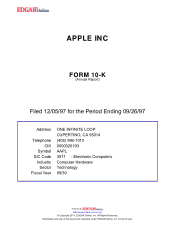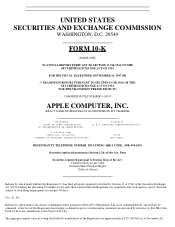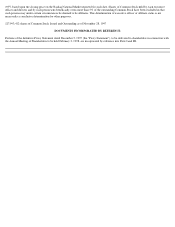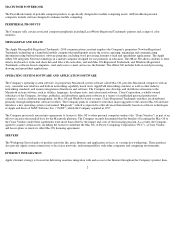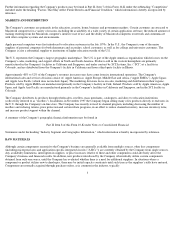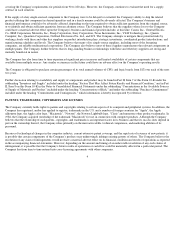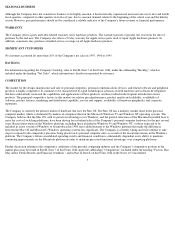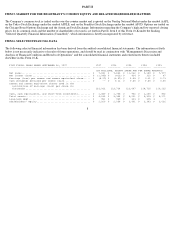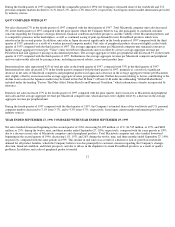Apple 1997 Annual Report Download - page 6
Download and view the complete annual report
Please find page 6 of the 1997 Apple annual report below. You can navigate through the pages in the report by either clicking on the pages listed below, or by using the keyword search tool below to find specific information within the annual report.Further information regarding the Company's products may be found in Part II, Item 7 of this Form 10-K under the subheading "Competition"
included under the heading "Factors That May Affect Future Results and Financial Condition," which information is hereby incorporated by
reference.
MARKETS AND DISTRIBUTION
The Company's customers are primarily in the education, creative, home, business and government markets. Certain customers are attracted to
Macintosh computers for a variety of reasons, including the availability of a wide variety of certain application software, the reduced amount of
training resulting from the Macintosh computer's intuitive ease of use, and the ability of Macintosh computers to network and communicate
with other computer systems and environments.
Apple personal computers were first introduced to education customers in the late 1970s. In the U.S., the Company is one of the major
suppliers of personal computers for both elementary and secondary school customers, as well as for college and university customers. The
Company is also a substantial supplier to institutions of higher education outside of the U.S.
The U.S. represents the Company's largest geographic marketplace. The U.S. is part of the Apple Americas organization which focuses on the
Company's sales, marketing, and support efforts in North and South America. Products sold in the western hemisphere are primarily
manufactured in the Company's facilities in California and Singapore, and under contract by SCI Systems, Inc. ("SCI") at a facility in
Colorado, and are distributed from the Company's facility in California and from a third-party facility in Illinois.
Approximately 48% to 52% of the Company's revenues in recent years have come from its international operations. The Company's
international sales and services divisions consist of: Apple Americas; Apple Europe, Middle East and Africa ("Apple EMEA"); Apple Japan;
and Apple Asia Pacific (which does not include Japan). The marketing divisions focus on sales, marketing and distribution in their regions.
Products sold by Apple EMEA are manufactured primarily in the Company's facility in Cork, Ireland. Products sold by Apple Americas, Apple
Japan, and Apple Asia Pacific are manufactured primarily in the Company's facilities in California and Singapore, and in the SCI facility in
Colorado.
The Company distributes its products through wholesalers, resellers, mass merchants, cataloguers, and direct to education institutions
(collectively referred to as "resellers"). In addition, in November 1997 the Company began selling many of its products directly to end users in
the U.S. through the Company's on-line store. The Company has recently revised its channel program, including decreasing the number of
resellers and reducing returns, price protection and certain rebate programs, in an effort to reduce channel inventory, increase inventory turns,
and increase product support within the channel.
A summary of the Company's geographic financial information may be found in
Part II, Item 8 of this Form 10-K under Notes to Consolidated Financial
Statements under the heading "Industry Segment and Geographic Information," which information is hereby incorporated by reference.
RAW MATERIALS
Although certain components essential to the Company's business are generally available from multiple sources, other key components
(including microprocessors and application-specific integrated circuits ("ASICs")) are currently obtained by the Company from single sources.
Any availability limitations, interruption in supplies, or price increases relative to these and other components could adversely affect the
Company's business and financial results. In addition, new products introduced by the Company often initially utilize custom components
obtained from only one source, until the Company has evaluated whether there is a need for additional suppliers. In situations where a
component or product utilizes new technologies, there may be initial capacity constraints until such time as the suppliers' yields have matured.
Components are normally acquired through purchase orders, as is common in the industry, typically
3

